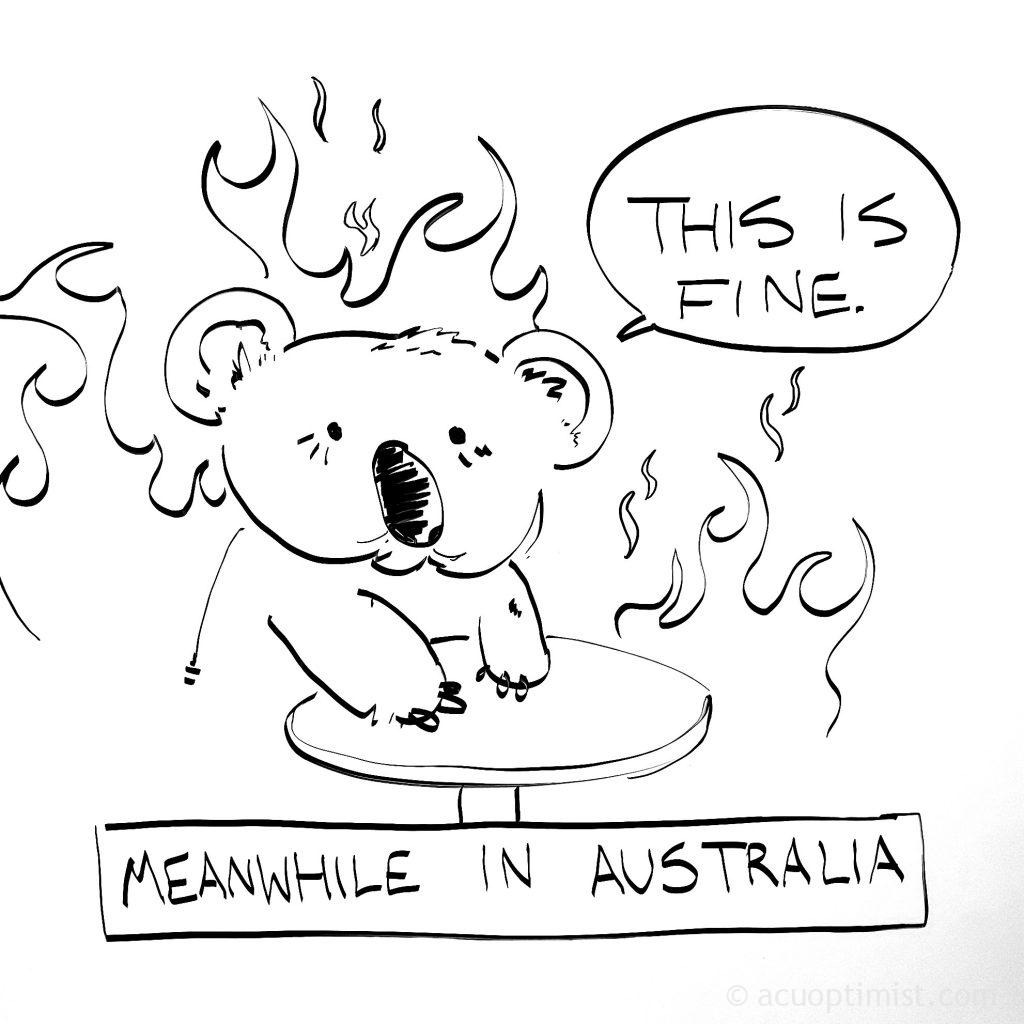In the southeastern region of Australia, immense bushfires are ripping thousands of miles of vegetation and its inhabitants to plume and char. The issue feels distant as the effects of the fires on the average American are minimal and the call to “grab a bucket and help” has an irony that needs no explaining. However, the warrant to help could not be more proximate and such a crisis demands nothing less.
It is uncertain how the fires were first started, whether by lightning strike or a mistake caused by humans but it was inarguably brought in tandem by one of the hottest and driest summers Australia has ever seen. In December 2019, the national average temperature was broken twice with its most recent record now being 107º F throughout Australia, a country that rivals the size of the United States.
The fires that only began getting out of control at the beginning of December have now burned an area bigger than the country of Denmark; the damage is estimated to be 27 million acres, or about 100,000 square miles as of Jan. 13.
Areas near the capital in New South Wales have been hit the hardest. The fortunate gift of rain that came last week has been an asset unlike any other to the fires combatants. Unfortunately, this coming week is forecasted to bring more heat and more wind.
Even with the partial subsidization of the fire, the urban areas in the Southeast have seen over 2000 homes ruined with the people displaced reaching a number much higher. According to AirVisual, New South Wales now has the third worst air quality of all major cities in the world.
It would seem that one of the biggest assets to the trifled ecosystem is the spread of awareness through social media in the U.S. While the world witnesses the worst fires seen in years, it’s hard to avoid heart-breaking images of the blackened earth and wounded animals that make the crisis feel more real than ever, despite the distance.
Luckily, through this, organizations like The Red Cross, Salvation Army, and Greening Australia allow simple ways of helping support Australia’s recovery by way of donation. To donate to these organizations is to allow firefighters a day off, to save Australia’s wildlife, to show the godly love that we are so obligated to extend.
For information on how to help control these fires, visit goodneighbors.org.au, redcross.org.au, or greeningaustralia.org.au

